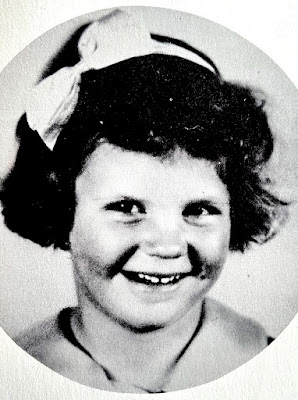 |
| Attila Kassay, M.B.A. Harvard, 1957. |
Sylvia Plath was a schoolgirl when the Cold War started in 1946. She saw communist Russia pulp Eastern Europe into a featureless "bloc" and rule it with no end in sight. The next generation thought Russians invented communism because no one told us otherwise. In school we saw no educational films about "communist countries" and heard not a peep about their histories or cultures, with one exception: Hungary.
Schools allowed us Hungary in small doses: a folk tale, or "Hungarian dances" as a piano-lesson staple. Americans even tolerated Hungarian TV stars who made fun of themselves: Ernie Kovacs, Zsa Zsa Gabor. Hungary was special. It got a pass. My heritage Eastern European to the core, I sensed this but I had not the tools of reason, and the forces ruling us did not intend to equip us.
But they didn't stop middle-schoolers from ordering selected paperbacks
for fifteen cents or a quarter through a service called Junior
Scholastic. I bought and read to tatters I Am Fifteen and I Don't Want to Die (1966) a Hungarian girl's World War II survival story, and James Michener's The Bridge at Andau (1957), about the failed 1956 revolution. Hungarians, I learned, were anti-communist homeland patriots. That they were not Slavs but Magyars was in their favor. Russia was Slavic, tainting all other Slavs. We were taught nothing about them except they brainwashed kids to be godless communists. This was our parents' worst nightmare. [1] In Cold War politics the enemy could be anywhere--on your block, in Cuba, in protest songs, in outer space. Only a radical might translate Polish poetry and pester us to read it.
Plath's pre-Cold War juvenile diaries show her teachers promoting cultural exchange, which Plath adopted as one of her values. May through July 1945 Plath read three Hungary-themed children's books by author-illustrator Kate Seredy, who wrote The White Stag (1938), a folk tale impressively illustrated with great historical tableaux and the noble deeds and steeds of tribal Huns and Magyars. [2] This cultural exposure, however mild, prepared Sylvia to care or feign care about later events in Hungary. [3]
Westerners thought warmly of Hungary even before the Iron Curtain. Several thousand Hungarian elites after their 1848 war on Austria moved to the United States. Nicknamed "Forty-niners," their refinement made a favorable impression. Another wave post-World War I brought artist Kate Seredy. Hungarian intellectuals in the 1930s fled the Nazis rather than join them. It's a nation's intellectuals and artists who write and sing their history, so we heard about Hungarian exiles' and immigrants' world-class contributions to filmmaking and design, and winning every category of Nobel Prize except for Peace. Communists after World War II seized control of Hungary's universities, purging them of Jews and bourgeoisie. Student Attila Kassay (b. 1928), University of Budapest, was one of them. [4]
A federal student-exchange program in 1949 brokered for Kassay a $425 scholarship to Boston's Northeastern University. It covered a year's tuition. [5] Kassay arrived in April 1950. Through his U.S. senator, Kassay in 1953 was able to apply for permanent residence. [6] He met and dated Sylvia Plath, who got swoony over Continentals with exotic names. [7] He joked that he was King of the Huns and this amused her. She loaned him ten cents so he could buy a comb. (Was he broke?) Four years older than Sylvia, he was worldly, suave, and ready for the long term, but Sylvia was not, wanting mostly "to conquer the cosmopolitan alien before I return to the rustic boy-next-door. Feminine vanity?" (Journals, 145). An Anglophile at heart, she later married Ted Hughes.
Kassay finished his Business Administration degree with honors and in 1957 his Harvard MBA. [8] In 1959 he married Sylvia Coutts. They settled in Worcester, Massachusetts and had four children. Known professionally as corporate vice-president Allan Kassay, he died in 1973, only 45 years old, but his Plath contact has made him as immortal as his name.
[1] They had their reasons. Unlike us they'd witnessed or heard firsthand how communism in practice got people killed.
[2] That fifth-century Huns and ninth-century Magyars together founded Hungary is a medieval legend, popular but false. Huns and Hungary are not related.
[3] Genealogical research shows Plath had Hungarian ancestry through her great-grandmother Barbara Greenwood. In her poem "Daddy," Plath styled Barbara as a "gypsy ancestress," in line with the stereotype of Hungarians as gypsies.
[4] Northeastern's yearbook "The Cauldron," 1955, says Kassay attended too the University of Innsbruck.
[5] Background from Medalis, Christopher N., "American Cultural Diplomacy: The Fulbright Programs in U.S.-Hungarian Higher Education," diss. Columbia University, 2009. $425 in 1950 funded one year of full-time tuition at Northeastern. Kassay did hold student co-op jobs.
[6] The Refugee Relief Act of 1953 was specifically for refugees from communist countries. Kassay's request is in the Congressional Record, U.S. Senate 13 April 1953, page 2964, "Bills Introduced by Mr. Saltonstall."
[7] Plath also had fantasies about Polish males, embarrassing even to read.
[8] Boston Globe, 13 June 1957, p. 16.


_%20-%20www.tripadvisor.com.jpg)

















.jpeg)















